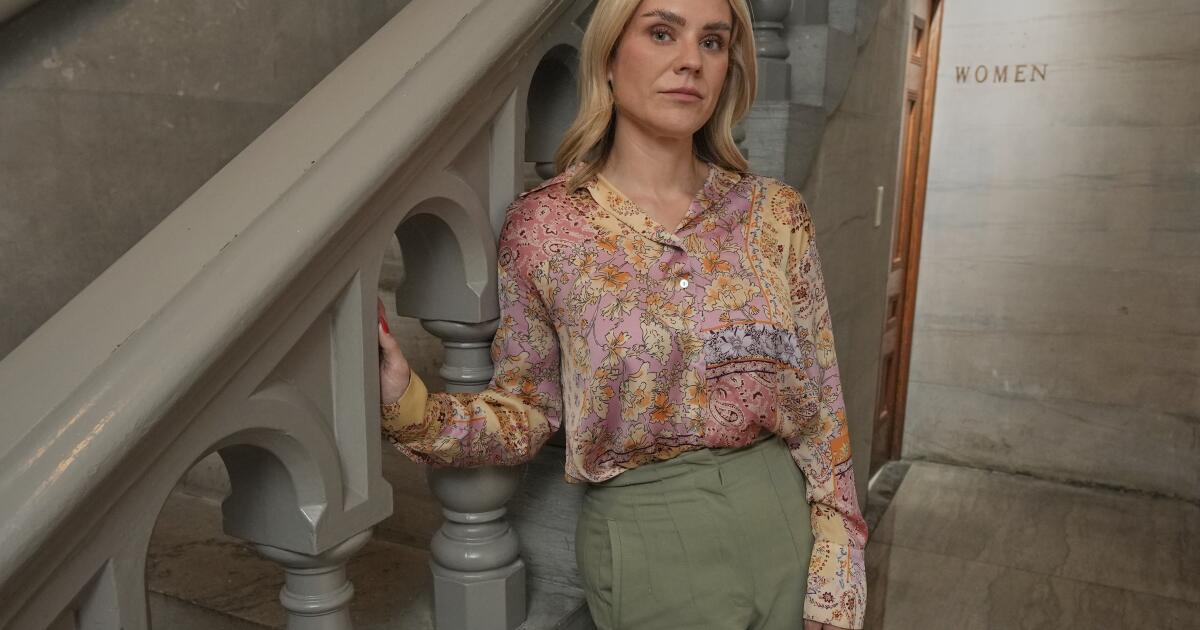Reigning NBA champs Oklahoma City Thunder aim to end NBA parity era
The defending NBA champions aren’t thinking of themselves in that way.
The 80th season of the NBA starts Tuesday night in Oklahoma City, where the Thunder — the “defending” champions, even though they don’t seem to like the term — will get their rings and enjoy one final moment of celebrating last season’s seven-game triumph over the Indiana Pacers in the NBA Finals.
“Everybody is saying ‘defending,’” guard Jalen Williams said, “but we’re trying to be on the offensive as well.”
Translation: One title isn’t enough for the Thunder. They want more.
They are fully aware that this is the NBA’s parity era — seven different franchises have won titles in the last seven years, a run unprecedented in league history. Commissioner Adam Silver has seen nine different franchises win in his 12 seasons leading the NBA; his predecessor, David Stern, saw eight different franchises win in his 30-year run as commissioner. The Thunder would like to be the ones to put at least a temporary halt to parity, and with basically everyone back from a 68-win team that won the crown last season, it’s easy to see why BetMGM Sportsbook lists the Thunder as favorites to win the 2026 title.
“It’s what you strive for,” said Thunder guard Shai Gilgeous-Alexander, coming off a year in which he was the scoring champion, an NBA champion, the MVP and the NBA Finals MVP. “We’ve all achieved something that we’ve dreamed about since we were kids. We’ve had plenty of time to relish and think about it and have fun, and I guess you can kind of say just soak in it. I know I have.
“But … it would suck to lose the NBA championship in 2026. So that’s the new focus. That’s the new goal.”
It won’t be easy, of course. The Western Conference is positively loaded.
Lakers guard Luka Doncic drives past Oklahoma City Thunder guard Cason Wallace during a road loss last season.
(Kyle Phillips / Associated Press)
Houston added Kevin Durant to a 52-win team. Victor Wembanyama is healthy again in San Antonio. Golden State still has Stephen Curry. The Lakers have Luka Doncic and (soon, they hope) LeBron James. Nikola Jokic remains unstoppable in Denver. Anthony Edwards hasn’t even reached his prime yet in Minnesota. The Clippers have the most experienced roster in the league. Dallas has the No. 1 pick in Cooper Flagg and tons of talent around him.
Those eight teams — among others — all have legitimate hopes. Consider this: Assuming the Thunder make the playoffs, at least one of those eight teams won’t even make Round 1 of the postseason.
“I think the Western Conference is the best conference I’ve ever seen. This is my 29th year in the NBA,” said Tim Connelly, Minnesota’s president of basketball operations. “I’ve never seen such a talent-rich conference. … We’re not going to duck anybody. We can’t wait to see where we stand up in this kind of historically stacked Western Conference.”
The Eastern Conference has a slew of intrigue.
Defending East champion Indiana lost Tyrese Haliburton to a torn Achilles tendon in Game 7 of the finals and knows he won’t play this season, then lost Myles Turner in free agency to Milwaukee. Boston — the big preseason favorite to win last season’s title after being champions in 2024 — is waiting to see if, or when, Jayson Tatum’s torn Achilles tendon will allow him to return. Philadelphia had a wasted season last year because of injuries and now gets another chance at seeing if Joel Embiid, Tyrese Maxey and Paul George can make a run. Cleveland and New York are established and expected to be near or at the top, with upstarts like Orlando, Detroit and Atlanta poised to give themselves contending opportunities as well.
“I think the team that wins the East will feel like they can win it, just like the team that wins in the West,” Milwaukee coach Doc Rivers said. “Last year I made the case that I thought the East was every bit as good as the West at the top. Now two teams have taken a hit. That may have changed.”
The Thunder are trying not to change.
They are no longer chasing. They are the ones being chased. That, Thunder coach Mark Daigneault hopes, is the only real difference between this season and last. This season will bring unplanned challenges, he said, and how the Thunder react in those moments may wind up telling the tale of this season.
“It’s pretty unpredictable as to where that will go,” Daigneault said. “What is predictable is the solution to it and the things that we’ll rely on. We’ve always relied on being very present. We’ve always relied on stacking the days. We’ve always relied on continuous improvement and an emphasis on the things that kind of transcend circumstances. And that’s really where our focus has been, and is, and will continue to be.”
Reynolds writes for the Associated Press.

